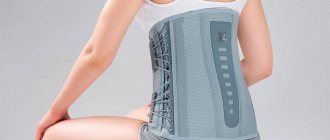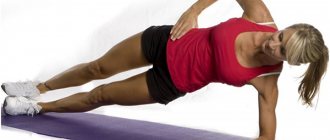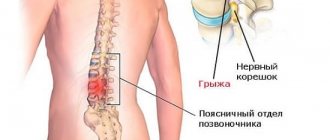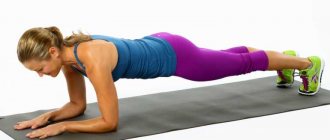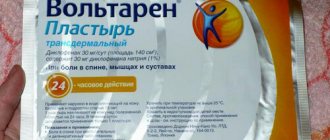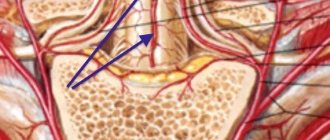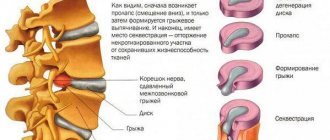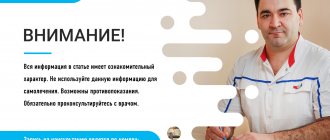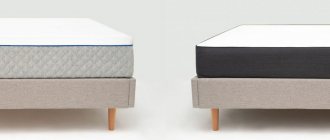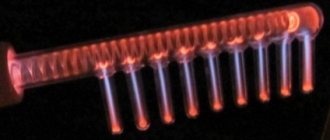Nordic walking will help you overcome your illness and strengthen your muscles. Health-improving walking for spinal hernia, according to research by scientists and doctors at the Cooper Institute, is very useful. While running, the load on the spine increases several times; it is equal to twice the patient’s body weight. Regular walking helps reduce the load and is equal to the patient’s weight; the Scandinavian method of therapy reduces the load by another 20%. Patients with a spinal hernia are advised to move more, this is achieved by doing Nordic walking.
A little history about the origins of the sport
Finland is considered the founder of Nordic walking. Hence the technique received the second name “Finnish walking”. It was developed for training Finnish skiers in the summer.
But thanks to German scientists who conducted numerous studies of this type of physical activity and proved good results in the fight against various ailments, Finnish or Nordic walking quickly spread throughout the world.
In Finland there is even an International Nordic Walking Association, which develops various programs and trains specialist instructors in this technique.
Contraindications for classes. Negative sides
The most vulnerable part of the spine is the lower back. It is the lumbar region that is more susceptible to the formation of a hernia formation. Nordic (regular) walking should be limited in the following cases:
- body temperature increased;
- colds;
- exacerbation of degenerative pathology;
- infectious and inflammatory diseases;
- malignant and benign formations;
- the presence of metastases in the spinal column;
- serious disturbances in the functioning of the respiratory organs and genitourinary system;
- problems with the heart and blood vessels.
Lumbar hernia of the spine leads to impaired blood circulation in the pelvic organs in women. For the fair sex, degenerative pathologies pose a serious danger and cause serious disorders of the reproductive system. You cannot do Nordic walking if you are menstruating or have problems with urination.
Benefit
This type of walking is safe and at the same time effective, which is important for intervertebral hernia. Special sticks play a significant role: they reduce the load on the spine, and the weight is distributed evenly throughout the body, which is of great importance in case of illness. And also thanks to this sport:
- immunity is strengthened,
- blood circulation improves,
- muscle activity increases,
- the cardiovascular system is strengthened,
- breathing is restored,
- balance improves,
- excess weight is reduced,
- posture is corrected,
- a positive attitude appears.
Choosing the right poles
To ensure maximum benefits from Scandinavian walks, you should select poles. Choose equipment according to your height. Please note that there are replaceable attachments that allow you to practice in winter, summer, and on dirt roads.
Consider the length of the poles. The length is selected using the following formula: the patient’s height is multiplied by 0.68. For example, 160x0.68=108.8. A patient 160 cm tall needs to purchase a stick 110–118 cm long. It is better to purchase retractable telescopic poles. This device allows you to change the length and can be used by all family members.
Share this article:
Rules and technique
Only strict adherence to the rules can benefit the patient, from the choice of shoes and clothing to the choice of special sticks. Everything should be as convenient as possible. The time of year and even the condition of the walking paths are taken into account. There is a formula for choosing poles: height x coefficient 0.7. For beginners and weakened people, the poles are shortened by 5 cm.
Orthopedic doctor, 12 years of work experience. Particular attention is paid to special poles designed for Nordic walking, because they play an important role and influence the result in the healing process.
Important:
- the material from which they are made,
- equipment,
- design.
Features of conducting classes
If training causes pain, you should stop immediately. The next time you practice, try to shorten the distance; most likely, the patient began to cover long distances early, which caused painful sensations. You must not overstrain the body or overload the spine. Follow the instructor's instructions. The instructor said that you should walk a distance of 1 km, which means you should listen to the coach’s opinion.
An experienced Nordic walking trainer will know better what measures will be beneficial and what is contraindicated for a patient with a spinal hernia. The main goal of training is to follow a schedule. A little rain is not a hindrance to your next workout; you should do it without missing classes. The patient’s mood on the day of the training is not important, the main thing is that it is on schedule. It is strictly forbidden to take the courage of a professional athlete and work at full capacity.
To make your workout easier, you should buy a pedometer. The first classes need to measure the number of steps taken. It is enough to take 100-200 steps in the first 2-3 lessons. Then the distance gradually increases, and in the future it will be possible to walk 2 km in one lesson. Do not strive to travel long distances after seeing the results of patients. Focus on sensations.
A few words about contraindications
To avoid harming yourself, do not walk with sticks under any circumstances if:
- your blood pressure is too high or too low;
- there is pronounced angina pectoris;
- you are recovering from surgery, stroke, heart attack;
- there is an infectious or viral disease;
- you have ailments of the spine or joints in acute phases.
And also, even if you don’t have any of the above! Do not start Nordic walking without your doctor's approval.
How to run correctly with a spinal hernia?
According to statistics, the most common type of light physical activity is running with a herniated disc. Before you start running, you must get approval from your doctor. In addition, it is very important to prepare the body for physical activity; this is why experts recommend doing more gentle sports before running, for example, Pilates or yoga - they form and strengthen the lumbar corset.
After the doctor has allowed running, and the patient’s body has been thoroughly prepared for this sport, it is important to observe 2 more important basics:
- Choose the right shoes. Running is only allowed in sneakers with shock-absorbing soles; they will help avoid unpleasant consequences (bulging discs) and will help you do your favorite sport without harming your back.
- Choose a convenient place for jogging. The ideal place for running is a dirt road; only such a surface protects the patient from accidental displacement of the feet, as well as pinched nerve endings. Running on a paved road is not recommended if you have a lumbar disc herniation.
An effective remedy for hernia is race walking.
Correct execution of movements is the key to treating the lumbar region. To return displaced vertebrae to their place, doctors advise walking or moderate jogging with some restrictions. Light jogging is encouraged. Depending on the location of the hernial protrusion, the type of movement and duration of the race are selected.
Types of walking used for hernia
Rehabilitation exercises have been developed for patients with hernia, including running. Walking varies in style:
- Nordic type – good for the heart and blood vessels, “trains” the spine without injuring it, helps to lose weight.
- Walking view is the best option for the patient. The person himself sets the speed of his step so that it is convenient to move. When moving, the body is saturated with oxygen.
- Sports movement puts more stress on the spinal column, forcing the muscles of the body to strain more. If you have a hernia, race walking with small steps at a fast pace is safe.
- The qigong exercise “Walking backwards” corrects posture and develops gait; the rear calves of the legs are involved in the training. It is recommended for those who suffer from lumbago in the back or have a curvature of the spine.
The spine is a complex skeletal structure. His vulnerable area is the lower back. A hernial formation forms in the lumbar region. To eliminate symptoms, only a specialist will select the best option for therapeutic walks.
Preventive actions
According to doctors, shoes that closely match the shape of the foot are called correct. It will allow you to walk on soft ground and forest paths without harming your health.
The rate of health steps is 120 per minute. This is a physical activity that is accessible to most people. During movement, breathing works vigorously and many muscle groups are involved. For good health, the distance should be up to 8 kilometers per day, i.e. 10 thousand steps.
If a diagnosis of “lumbar intervertebral hernia” is made, then for therapeutic purposes you need to start training sessions with a light load - up to 3 km. The goal is to go further, regardless of weather conditions, overcoming obstacles with persistence, developing endurance.
If the goal is to improve your health, then there should be no break. Walking will prevent the development of spinal diseases. The gait must be correct: the back is straight, without bending, they walk with their heads raised.
Physical activity:
- will protect against a decrease in muscle volume and thinning of their fibers;
- improves blood flow.
Features of Nordic walking
This type of sports activity has been gaining momentum recently. Originated in Finland in the 30s of the last century. The Finns wanted to ski in the off-season. We chose a technique - to go through rough terrain without skis, pushing off only with poles. The method of walking allowed skiers to keep in physical shape and achieve heights in tournaments and Olympics.
Medical studies have found that such movement has a beneficial effect on a person’s overall well-being. Nordic walking is included in the program of rehabilitation centers and is practiced in sanatoriums. There are many indications for use, but this type of sports training is valuable for herniated lumbar spine.
What are the features of this type of training:
- movement occurs with support;
- 90% of skeletal muscles are involved in work (with normal walking - 40 percent);
- The load on the torso increases, so calories are burned (energy is wasted), muscles are toned and strengthened better, and blood circulation is stabilized.
This therapy has no age restrictions.
Shoes are the basis of proper walking
Uncomfortable shoes restrict movement. Due to the tightness, pain occurs in the lower extremities, and the entire musculoskeletal system suffers. You don't need casual clothing.
Shoes should fit the foot, not rub or be loose. The special feature of the sneakers is good ankle support. For cushioning and softness, foam insoles are inserted and thick woolen short stockings are pulled on. Sports shoes should flex in the sole area. This will help use additional leg muscles and many joints. The lacing is not pulled tight. The intertwined braid is laced loosely so that the joints of the legs are not compressed.
Some more useful information: the poles must match the person’s height. Training takes place at a fast pace. People training perform an imitation of skiing. The heel of the pushing leg rolls onto the toe, lifting off the plane after the free leg is a little further away. Walking takes about forty minutes, three times a week. You need to do therapeutic walking correctly so that there is no overload during training.
The result of sports therapy: the treatment is very effective, because muscle contraction increases, the spine becomes stronger, and joint mobility improves.
Need to know!
With low physical activity, the force of muscle contraction decreases. Physical inactivity occurs, and an intervertebral hernia develops against its background. With this disease, disc fragments bulge or, conversely, fall out into the spinal canal.
To relieve the symptoms of the disease, it is useful to do sports exercises moderately and without fanaticism, practice daily walking, and exercise on exercise equipment designed to strengthen the back muscles. Physical activity is carried out during the period of remission, when signs of the disease do not appear and the pain subsides.
Before undertaking an exercise program, seek the advice of a professional.
Author: K.M.N., Academician of the Russian Academy of Medical Sciences M.A. Bobyr
Can stress cause back pain?
Surprisingly, daily psycho-emotional overload can lead to the appearance and intensification of back pain, says Dmitry Gusev. Patients under chronic stress are more likely to experience chronic pain.
One of the mechanisms of the general reaction to stress is an increase in muscle tone and spasm of small vessels, which impairs the nutrition of muscles, ligaments and nerve roots, explains the mechanism of stress, Alexander Kaurkin: “Against the background of other problems, this may well become a provocateur of back pain.”
Permissible physical activity
Any loads when diagnosing a spinal hernia can be performed only after consultation and approval from the treating doctor.
It must be remembered that each patient always has an individual clinical picture, therefore, what is useful for one may harm another.
It is also important to know that, regardless of the degree of pathology, during the period of exacerbation, all patients are strictly recommended to limit any physical activity, since an active life can contribute to the prolapse of the spinal disc, and then to even greater pinching of the nerve.
To prevent the development of pathology, as well as to cure it, some physical activity is permissible:
- Pilates;
- yoga;
- run;
- light gymnastics;
- physiotherapy;
- Nordic walking.
Treatment of intervertebral hernia without surgery
The spine is the central link of the musculoskeletal system. It consists of individual vertebrae connected to each other by intervertebral discs. One of the most common diseases of the spine is intervertebral hernia - a destructive change in the connection between the vertebrae. Most often, a herniated disc occurs against the background of long-term osteochondrosis or as a result of injury.
At the initial stage, treatment of intervertebral hernia is possible in a conservative way. After a detailed examination, the neurologist selects the optimal treatment regimen. In advanced progressive forms, intervertebral hernia can lead to serious complications. Therefore, early detection of destructive changes and timely seeking help from a doctor are the key to successful treatment.
At the Rehabilitation and Health Complex of the Scandinavian Health Center, the patient can undergo a preventive, restorative course of physical therapy (rehabilitation after treatment of a herniated disc) under the supervision of experienced specialists. The Center gives preference to conservative treatment methods using manual therapy, physiotherapy and physical therapy. The Center's capabilities allow it to provide comprehensive treatment and attract doctors of related specialties. This tactic ensures high efficiency and high-quality results.
With an intervertebral hernia of the thoracic region, pain in the chest is characteristic, pain that intensifies against the background of coughing, sneezing, and also after physical exertion, it can radiate to the stomach. Remember that the development of this disease is a long process. It may be accompanied by periods of remission, during which the pathology is asymptomatic and the patient’s condition stabilizes. However, despite temporary improvements, dangerous symptoms of the disease can make themselves felt again. Therefore, it is important to complete the full course of treatment followed by rehabilitation therapy.
Head of department, neurologist
| Service | Price |
| Appointment with neurologist L.D. first amb. | 2000₽ |
| Appointment with neurologist L.D. rep. amb. | 1800₽ |
| Individual lesson in the exercise therapy room | 2000₽ |
| Manual therapy (one session) | 3500₽ |
| Group lesson in the exercise therapy room | 1200₽ |
| Therapeutic session on Tergumed simulators | 700₽ |
| Reflexology session | 2000₽ |
Patient reviews:
I would like to express my deep gratitude to Grigory Anatolyevich Orlov. In these difficult times, it is very difficult to find a good doctor. He is the best! I thank you for your human attitude, attentiveness, responsiveness, professionalism, and qualified assistance.
I started having back problems and severe headaches. Based on the recommendation, I made an appointment with doctor Kaplun; it was very pleasant to receive a sincere caring attitude, understanding and quality advice (doctors often forget that their patient is a person who needs understanding, but here at the appointment I saw that the doctor is sincerely interested in helping me with my problem ). The doctor prescribed a comprehensive treatment: massage, manual therapy and physiotherapy. I went to 2 specialists for a massage: and Belov’s doctors turned out to be incredibly strong specialists! After several sessions, the muscle tension went away. he worked every muscle very well, under his hands the muscles straightened out, he told me about the nuances of my muscles. In addition to massage, she gave recommendations on what not to do so as not to harm your back, and what exercises you need to do to keep your back healthy. The chiropractor adjusted all my vertebrae, explained the causes of my back problems, and gave useful recommendations. The physiotherapist selected a set of physiotherapy treatments for me that my back liked. After each physiotherapy session, I left in such a state as if I had been to a Thai spa. I want to say a huge thank you to all the doctors who participated in my healing. At the end of the treatment, I just felt like a different person, the headaches and back pain went away, my shoulders straightened, my mood improved! It is clear that the doctors whom I was lucky to contact really love their work and devote themselves to it completely! Thank you for your professionalism and kind, warm attitude!
Is jumping allowed?
A very common problem is the question, is it possible to jump with a herniated disc? Some physical movements become unacceptable in the presence of a spinal hernia. Many doctors include jumping rope as one of them. Doctors are confident that jumping rope for a herniated disc is inappropriate and not recommended. The main prohibition is based on the fact that jumping contributes to increased compression of the lower parts of the spine, which threatens serious complications for a person. In the same case, if a person, along with a herniated spine, is overweight, then he is strictly prohibited from jumping.
In addition to jumping, the following activities are prohibited:
- weightlifting;
- football;
- basketball;
- hockey;
- professional skiing;
- bodybuilding.

